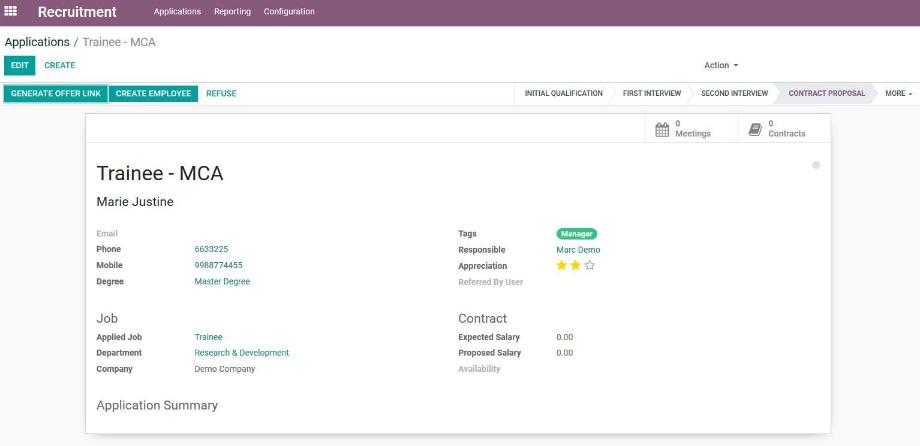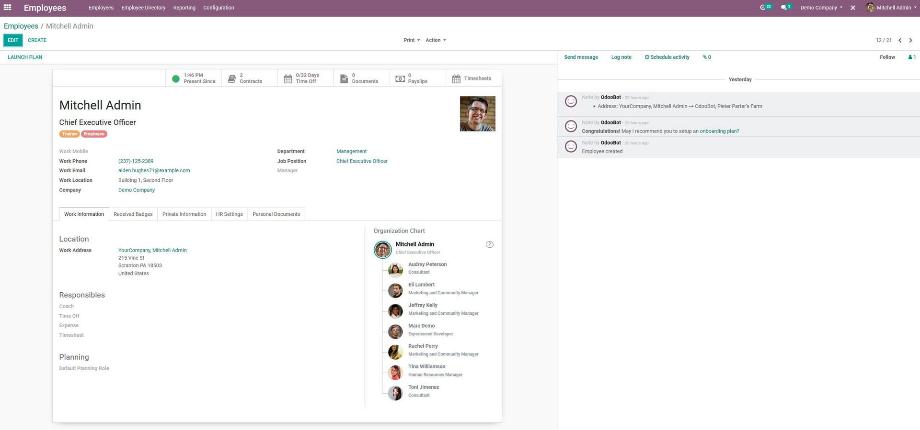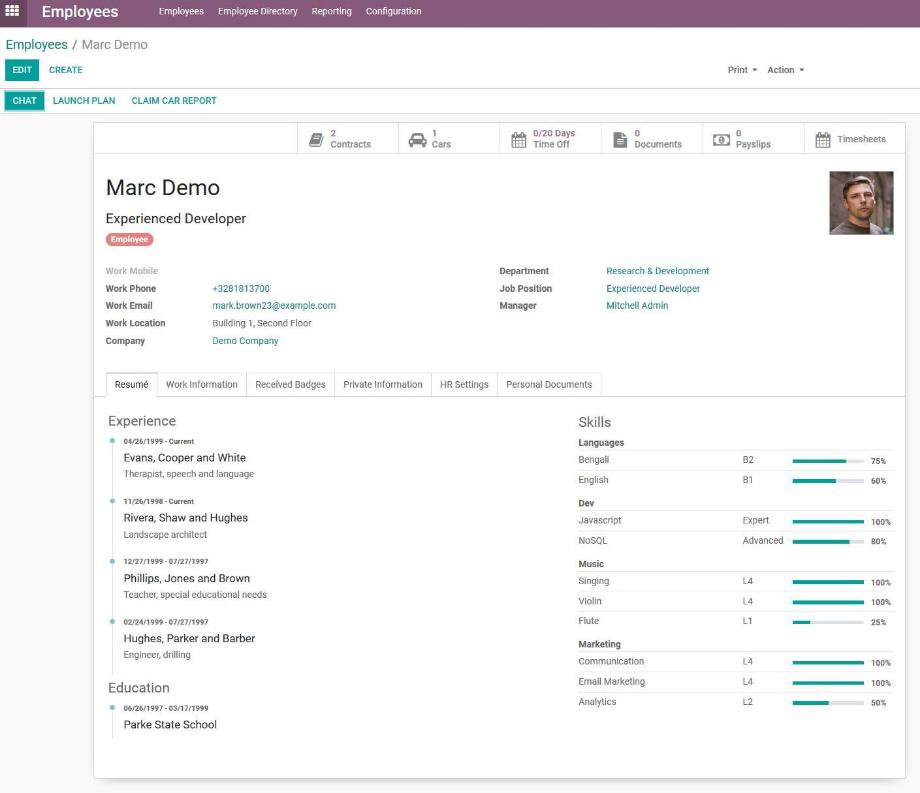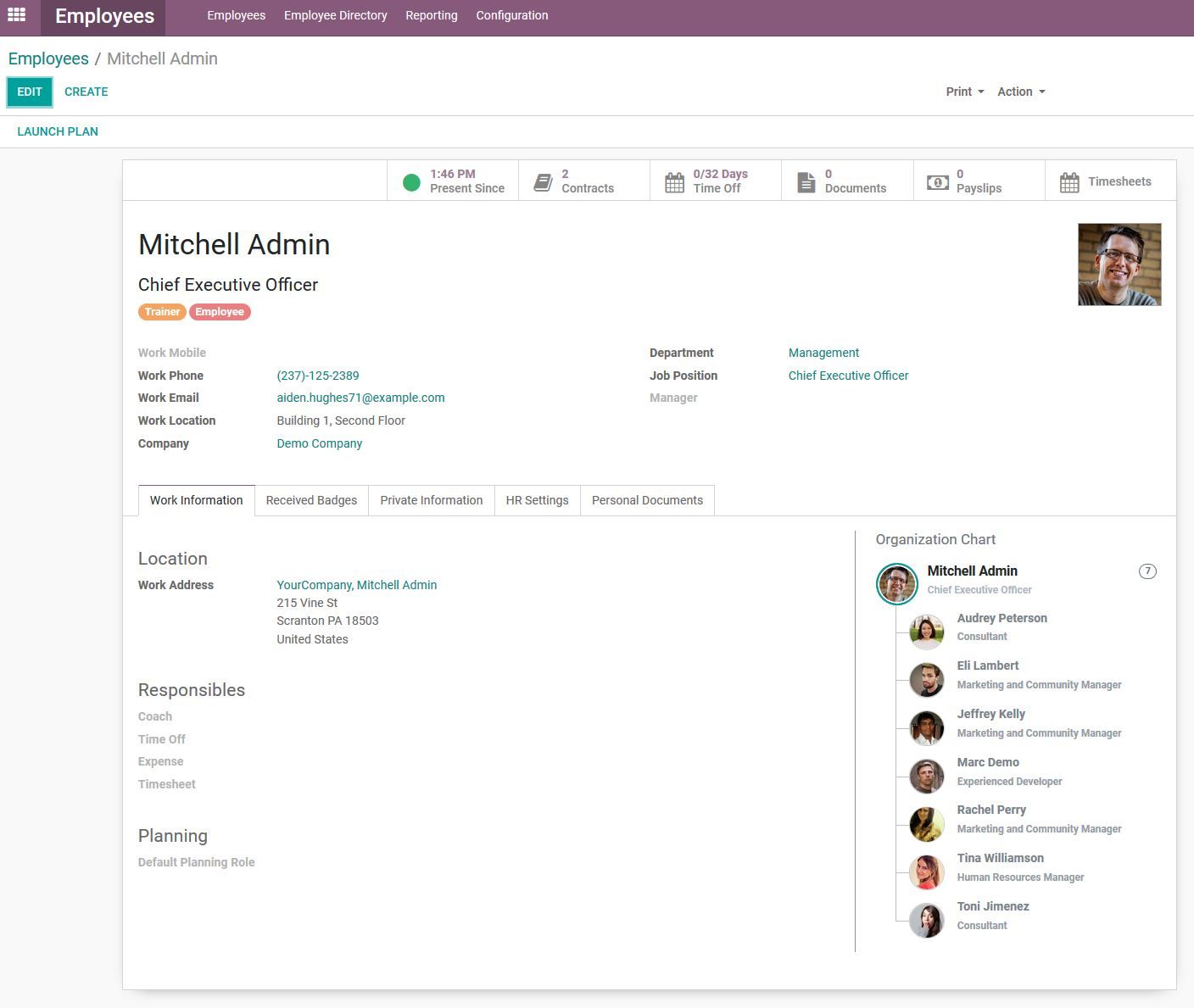Human resources management is a central function in every company. The company's own employees are one of the most important resources for achieving the company's goals and thus its success. The management of employees should be made as simple and effective as possible on the system side.
An ERP system can support this by seamlessly integrating HR management into it, just like all other company processes. With its HR module, Odoo provides the ideal tool for the integrated mapping of HR processes with many helpful links to HR-related topics, which we present in today's blog.
To get started with the Human Resources module, we have go back to the Recruiting module. Here we have the option of creating an employee object from the applicant data record. The advantage is that information such as name, private contact data or job reference is transferred directly from the applicant object to the employee object. In addition, we can find a link in the applicant object history that takes us directly to the employee object. All other important information about the Recruiting module can be found here in our blog.

In the Human Resources module we find the main menu, through which we can navigate to the overview of our employees, to the linked Contracts module, to the reporting and to the configuration of the module. In the dashboard of the Human Resources module, we have all our employees at a glance. In addition to the name and position, Odoo shows us the most important business contact information of the employees with the phone number and email address.
In addition, we can use the traffic light system to see whether our employees are logged into Odoo and can therefore be reached. Furthermore, Odoo provides a filter menu with which we can select our employees according to their affiliation to a certain company or department. The standard functions for filtering, grouping and favorites are of course also available to us, just as in the other modules in Odoo.

In the first step it is advisable to configure the internal department structure. For this purpose we navigate within the module to Configuration --> Departments. Within the configuration of the department structure we define the name of the department, the parent department and the manager of the department. This will build an organizational chart in each employee object, in which the team structure will be displayed. Moreover, when selecting a department in the employee object, the manager of the department is automatically assigned to the employee as his manager.
We then store the working time models relevant to the company in Odoo. By default, a working time model is assigned to each newly created employee, which forms the basis for the clean calculation of attendance and, most importantly, absence times. To configure the working time models, we navigate in the module to Configuration --> Settings. Alternatively, we can also get to the configuration of the working time models via the Settings --> General settings --> Personnel module. Under the item "Work Organization" we find "Company Working Hours". Here we can select by drop down which working hours model will be assigned by default to a newly created employee object. Furthermore, the working hours models can be edited here.
To configure the working time model, we assign it to the respective company and select our time zone. We also specify the usual working time for each day of the week. Odoo uses this information to calculate the average working time per working week. The division into morning and afternoon serves us later in the vacation planning, and gives the possibility to apply for half days of vacation.
In the "Global Time Off" tab, we define public holidays, which are relevant when calculating absences, since Odoo recognizes them as public holidays and does not deduct them from the assigned vacation quota. In the employee object, we can also change the working time model later by activating the developer mode and making the adjustment in the "Work Information" tab.

In the employee object itself we find the most important information very well organized in different, thematically arranged tabs. In the upper section, we enter the business contact data and arrange the employee in the previously defined department structure. The keyword function, also known from other Odoo objects, allows us to additionally categorize the employee objects, which can thus be conveniently filtered in the employee overview.
The "Work Information" tab is used to enter the responsibilities for topics such as absence or expenses. Here, it is defined who is allowed to approve a leave or expense request of this employee. In addition, as already described above, the organization chart is displayed according to the defined department structure.

In the tab "Private Information" we find a variety of personal information that we can provide as needed. These are for example contact data , bank details, an emergency contact or the details of a possibly existing work permit. In the "HR Settings" we have, among other things, the possibility to link the employee object with the Odoo user. This means that, for example, attendances and absences that the user creates in Odoo are automatically assigned to the employee linked to the user and can be tracked in the employee object.
Furthermore, we upload the most important documents of the employee in the "Personal Documents" tab, such as their ID card or driver's license. In addition, as of Odoo 13, Skills Management can be activated in the Personal module via the configuration. This means that a new tab appears in the employee object, where we can not only store the employee's CV, but also add skills and assign an appropriate level. By using Skills Management, it is possible, for example, to draw conclusions about personnel deployment planning or personnel development.

Analogous to other modules or objects in Odoo, various quick links also help us in the employee object to navigate as quickly as possible to linked modules. In addition to the link to the Attendance and Absence modules, we also find links to Document Management, Payroll, Time Recording at the project management level, and the Contracts module. Of course, access to the HR module and the other modules can be defined individually for each user, so that personal data can only be viewed by users who actually need this access.

A big advantage in this module is also the record history. Here we can communicate directly from Odoo with the employee via email, so that the communication, including the employee's responses, is displayed chronologically and traceably on the employee object. The implementation of email templates helps us to make the communication even more efficient.
Through activity planning, we are able to share tasks in the team and improve our own organization. In the Human Resources module we can find another helpful feature regarding activity planning. In the configuration of the module, we can define onboarding and offboarding plans, which are retrieved when an employee joins or leaves. These ensure that the activities defined in the plan are distributed to the responsible persons with a single click and that the onboarding or offboarding tasks are thus standardized and quickly assigned.
In conclusion, we can find that the HR module links very well to the adjacent business processes. The creation of employee objects from the applicant object not only represents a useful link between the modules, but also reduces manual effort and saves time. The Contracts module, which is integrated into the Human Resources module but is nevertheless independent, closes the circle of personnel-relevant information and documents and, precisely because of its independence, ensures that contract documents and objects are clearly mapped. The connection of attendance and absence ensures accurate and transparent time recording. In addition, the modul appraisal can be used to map personnel development or the Expenses module to settle the expenses of our employees.
Are you looking for an integrative and smart ERP system with which you can map your personnel processes? Then contact us now and we are happy to help you!
Sources: www.odoo.com
